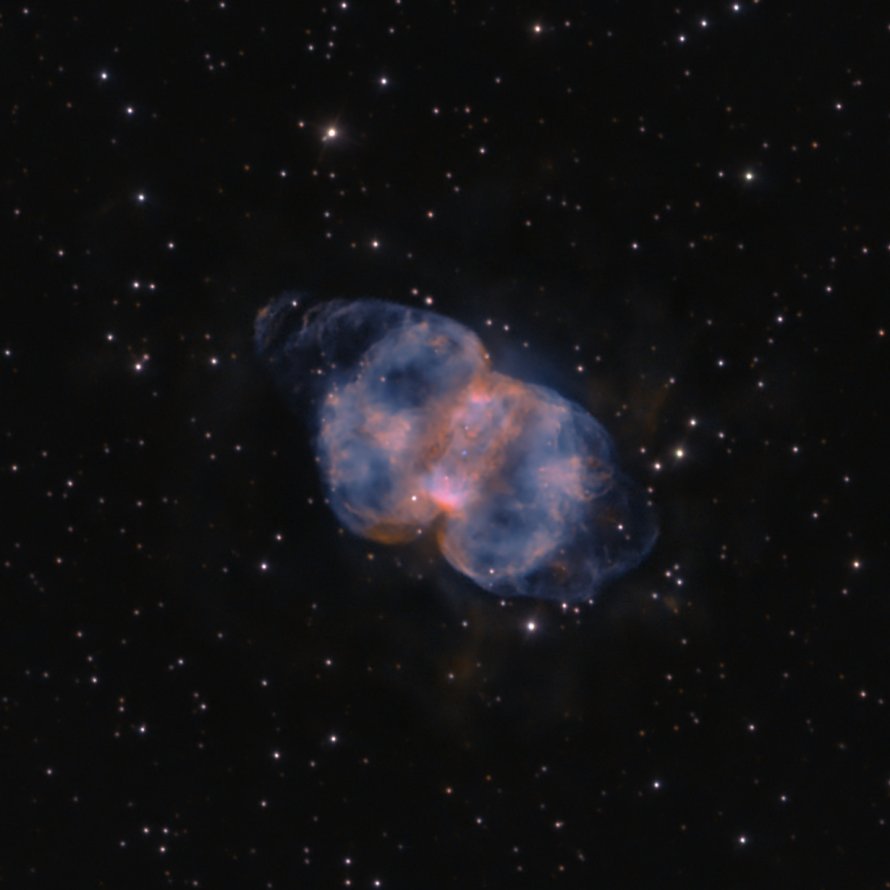M76 (NGC 650) - Little Dumbbell Nebula
Messier 76 (NGC 650), also known as the Little Dumbbell Nebula, is a planetary nebula located in the constellation Perseus, in the Orion Arm of the Milky Way Galaxy in the Local Group of galaxies. M76 is 2500 light years away from Earth.
M76 is best viewed during winter, is magnitude 10.1, and can be viewed with small telescope. M76 is 2.7' x 1.8' in apparent size. For reference, the full moon is 30'.
Observing difficulty: Intermediate
- Name:
- Little Dumbbell Nebula
- Alt name:
- Barbell Nebula
- Type:
- planetary nebula
- Constellation:
- Perseus
- NGC or IC:
- NGC 650
- Magnitude:
- 10.1
- Viewing:
- small telescope
- Size:
- 2.7' x 1.8'
- Distance (light years):
- 2500 LY
- RA:
- 1h 42.4m
- Dec:
- 51 34'
- Season:
- winter
- Milky Way location:
- Orion Arm
- Galaxy group:
- Local Group
- Messier Marathon #:
- 9
* The naked eye can see up to magnitude ~7-8 objects under ideal dark sky conditions.
The Little Dumbbell Nebula
Messier 76, also known as the Little Dumbbell Nebula, Barbell Nebula, or Cork Nebula, is a planetary nebula situated in the constellation Perseus. Its other popular name is the Butterfly Nebula due to its unique, bilateral shape. Discovered by Pierre M?chain in 1780, it was later catalogued by Charles Messier.
Characteristics of M76
Unlike a typical nebula which is a cloud of gas and dust, a planetary nebula is the remnants of a star similar to our Sun that has exhausted its nuclear fuel. M76 is a particularly complex planetary nebula. It consists of two lobes, each of them is believed to be the material ejected by the dying star, and illuminated by the remnant star's ultraviolet radiation.
The star at the heart of M76 is a white dwarf, the remnants of a star that has completed the process of shedding its outer layers. It is the faint light of this white dwarf that illuminates the nebula from the inside, causing it to glow.
Magnitude and Size
M76 has an apparent magnitude of 10.1, making it one of the faintest objects in Messier's catalog. Its small size and low brightness make it a challenging target for amateur astronomers. The nebula spans about 2.7 arcminutes in the sky, which is relatively small compared to other nebulae, and is situated about 3,400 light-years away from us.
Finding and Viewing M76
Locating M76 in the night sky can be a challenge due to its low brightness. It lies near the celestial equator, which makes it visible from both hemispheres. To find M76, locate the W-shaped constellation Cassiopeia. Draw an imaginary line from the star Epsilon Cassiopeiae to the star Alpha Persei (Mirfak), and M76 lies roughly halfway along this line.
Given its low brightness and small size, viewing M76 requires a dark sky, a good telescope, and ideally a nebula filter to enhance contrast. Even with a larger telescope, M76 may appear as a small, dimly lit object. Its unique shape and structure become visible with larger apertures and longer exposures in astrophotography.
In conclusion, Messier 76, despite its dimness and small size, offers a delightful view under dark skies and with good equipment. Its unique structure and fascinating lifecycle make it an interesting target for both observation and study.



